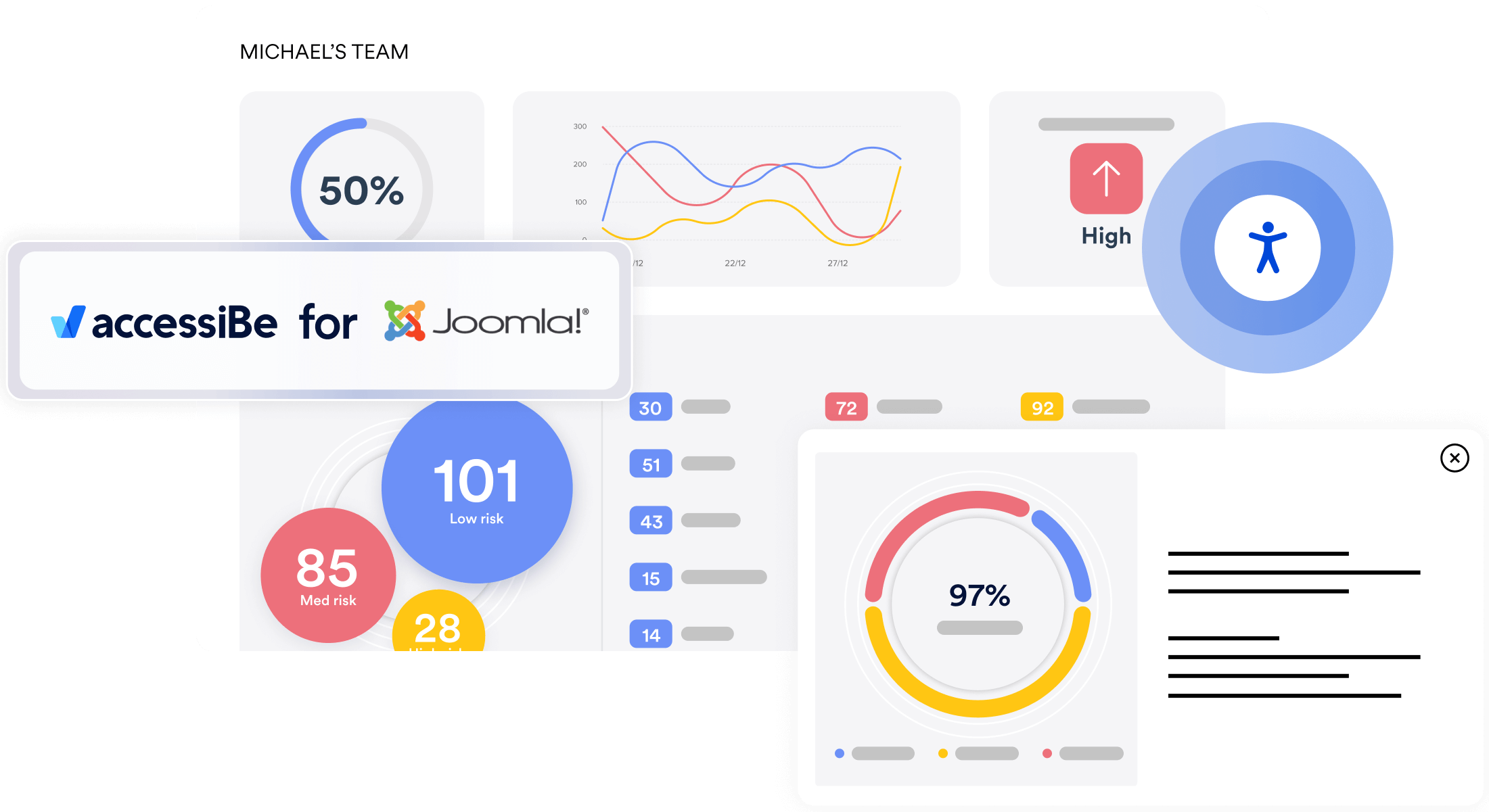Joomla! is a free, open-source content management system that’s used for building websites and web applications.
From the get-go, Joomla! users understand that it is their responsibility to research and implement accessibility foundations within their website, according to Joomla!’s accessibility statement: “While Joomla! enables the creation of accessible AA-level sites, it is up to those building individual sites to implement their own front-end implementations in an accessible way. To put it another way, we will give you an accessible base installation, but it will be up to you to ensure it is still accessible at the end of the build.”
See the accessiBe installation guide for Joomla here
Furthermore, Joomla!’s accessibility disclaimer states that “The Joomla! Project is not responsible for compliance with the standards of accessibility of applications and extensions created with and/or for the Joomla! CMS, and Framework”.
This means that building a website to cater to the needs of people with disabilities and ensuring compliance with accessibility legislation is entirely the website owner’s responsibility. Joomla! does refer to the WCAG 2.1 AA, or the web content accessibility guidelines, as the standard for accessibility principles but does not offer built-in elements to help users achieve them.
Currently, the tools that they claim to offer are preset templates that were created with accessibility in mind. There are only a handful of templates to choose from, which doesn’t give you much variety, and they offer different levels of accessibility. This means that depending on the template you choose, you could be neglecting crucial WCAG elements such as keyboard navigation and screen-reader compliance, for blind people and the motor-impaired respectively, and are vulnerable to a web accessibility lawsuit.
Keep in mind that if you choose one of these preset templates, it’s still entirely up to you to choose the right colors, fonts, and other design-related adjustments according to the WCAG’s principles. In addition, you will have to check and test your website and maintain accessibility compliance with every change you make to your website.
Alternatively, you could choose to build your website from scratch and design it the way you want. While implementing the 1000 pages of the WCAG 2.1 AA is necessary for achieving compliance, it can be challenging no matter what your developing experience is.



